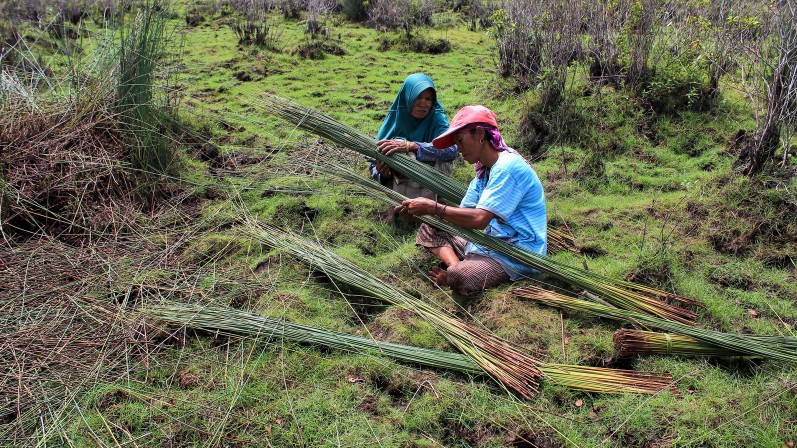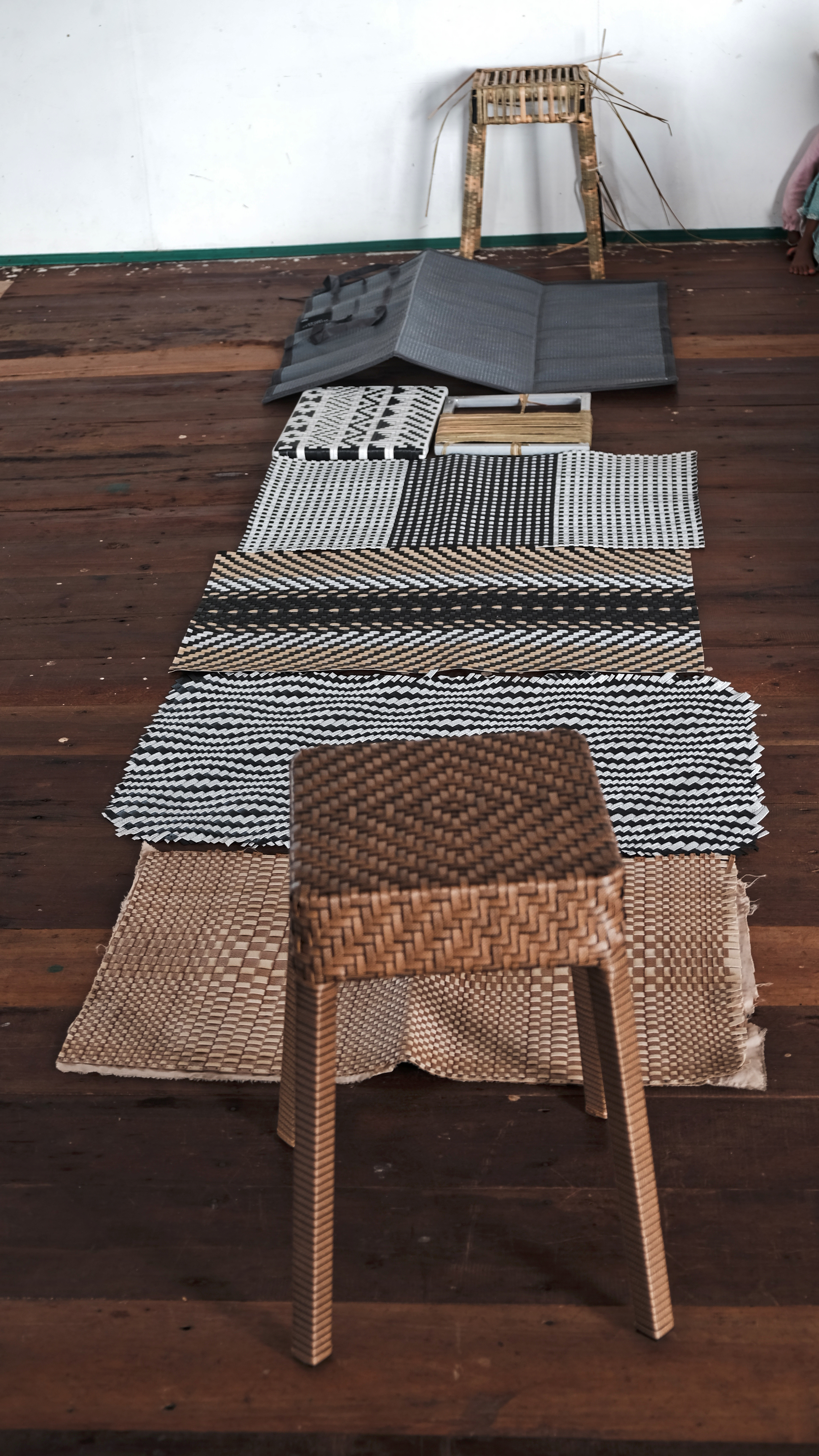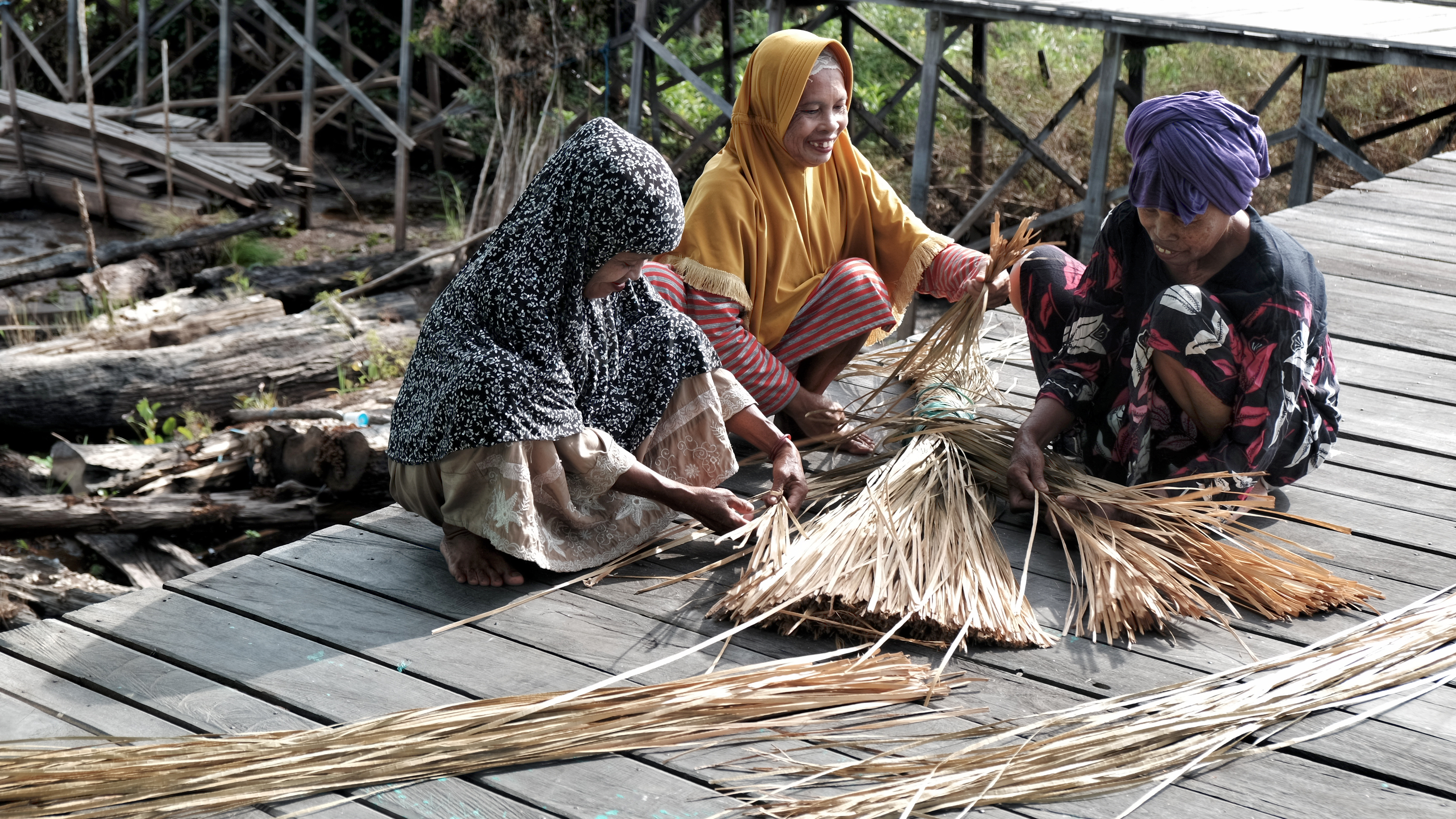Complaints about Living Amid Smoke in Teluk Makmur
By Oriz PutraStepping into the Purun Fields of the Bararawa Peat Swamp
“So, who's coming out to the purun fields next year?” asked Basrun, one of Bararawa Village's leaders. “But, let me remind you, this dry season boat won’t get us to the fields. You have to walk there. It’s not bad, about 3 km,” he continued.
Basrun's warning did not dampen the Pantau Gambut team’s desire to visit the purun fields. Besides the need to document field data, the team also wanted to see the condition of the village peat swamp, which was included in the Peat Restoration Agency (BRG)’s Peat Care Village program for the year of 2017.
Bararawa is one of the villages in Hulu Sungai Utara district, South Kalimantan, on the border with Central Kalimantan. Even though they’re on the same island, South and Central Kalimantan follow different time zones. Central Kalimantan follows Western Indonesia Time (WIB), while South Kalimantan is on Central Indonesia Time (WITA), one hour ahead of WIB. This created confusion for the Pantau Gambut team, because digital clocks on mobile devices automatically change time zones frequently along the border of these two provinces.
According to geomorphological data from the 2017 BRG Peat Care Village report, the Bararawa Village area extends 4,840 hectares, half of which is shallow peat swamp. Another approximately 21% of the village area is waterlogged peatland, while 1% is deep peat swamp. The remaining 28% of the area is river plain.
The depth of peat in Bararawa Village varies from zero to two meters. The deep peat areas are far from local settlements, which are lined along the Paminggir river.
With the landscape, peatlands in the Bararawa Village are flooded for most of the year. But when the dry season comes, some peat swamps also dry up.
As Basrun warned, the small boats carrying the Pantau Gambut team could not reach the purun fields. The team had to get off the boat and walk across puddles, mud, piles of yellow water hyacinth, and cracks of dry land due to drought.
It took more than 1.5 hours to reach the purun fields, with some members of the expedition team slipping deep into the mud.
Bararawa Village residents themselves admitted that they are reluctant to travel to the purun fields during the dry season because of the long walk required. They prefer to harvest during the rainy season. At high tide, they can harvest purun directly from their small boats.
Here, purun can be collected by anyone, as the field is jointly owned by Bararawa Village residents.
"In the past, despite the dry season, we did not have to walk this far to harvest our purun. But after the 2015 fires, the purun only grows in the farthest fields," said interim Bararawa Village Chief Sarli.
Other than pushing the purun fields farther out, the impacts of the 2015 fires are no longer visible in Bararawa Village. It seems parts of the region have recovered naturally.
Since there is no peat wetting infrastructure in the Bararawa area, wells drilled in the village have become the main sources of potable water.
Purun is one of the raw materials used to support the livelihoods of local residents, namely weaving, especially for women. Maiwak (fish hunting) is the primary livelihood of Bararawa residents. During droughts, they can catch large quantities of fish to sell. However, the current dry season is uncertain, lasting only about a month. This is considerably different from previous years, when droughts lasted 4–5 months, and the swamp was inundated with water only 7–8 months per year.
Due to this shortened maiwak period, residents now depend on other livelihood activities, such as weaving purun. The main woven products are purun mats and caps. Local craftsmen sell their products to wholesalers who visit the village.
Purun mats and hats are sold cheaply, costing only IDR 5000 and IDR 3000 each respectively. Sometimes, they are even bartered in exchange for rice.
Purun is very important for the citizens of Bararawa as an alternative source of income. Residents want to continue maintaining the peat swamp in the Bararawa Village, because that's where the purun rods grow longest, offering quality raw material for wicker crafts.







